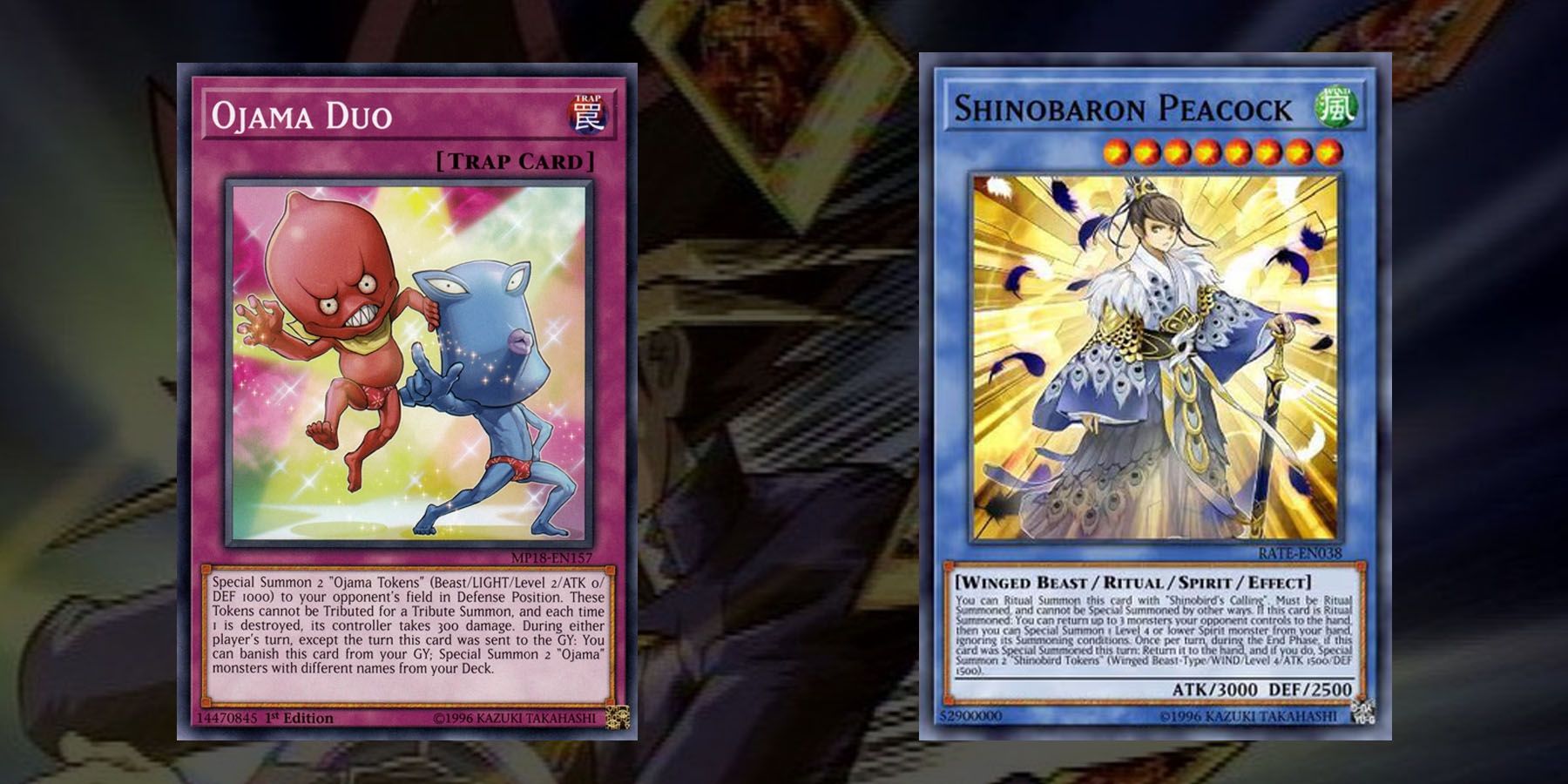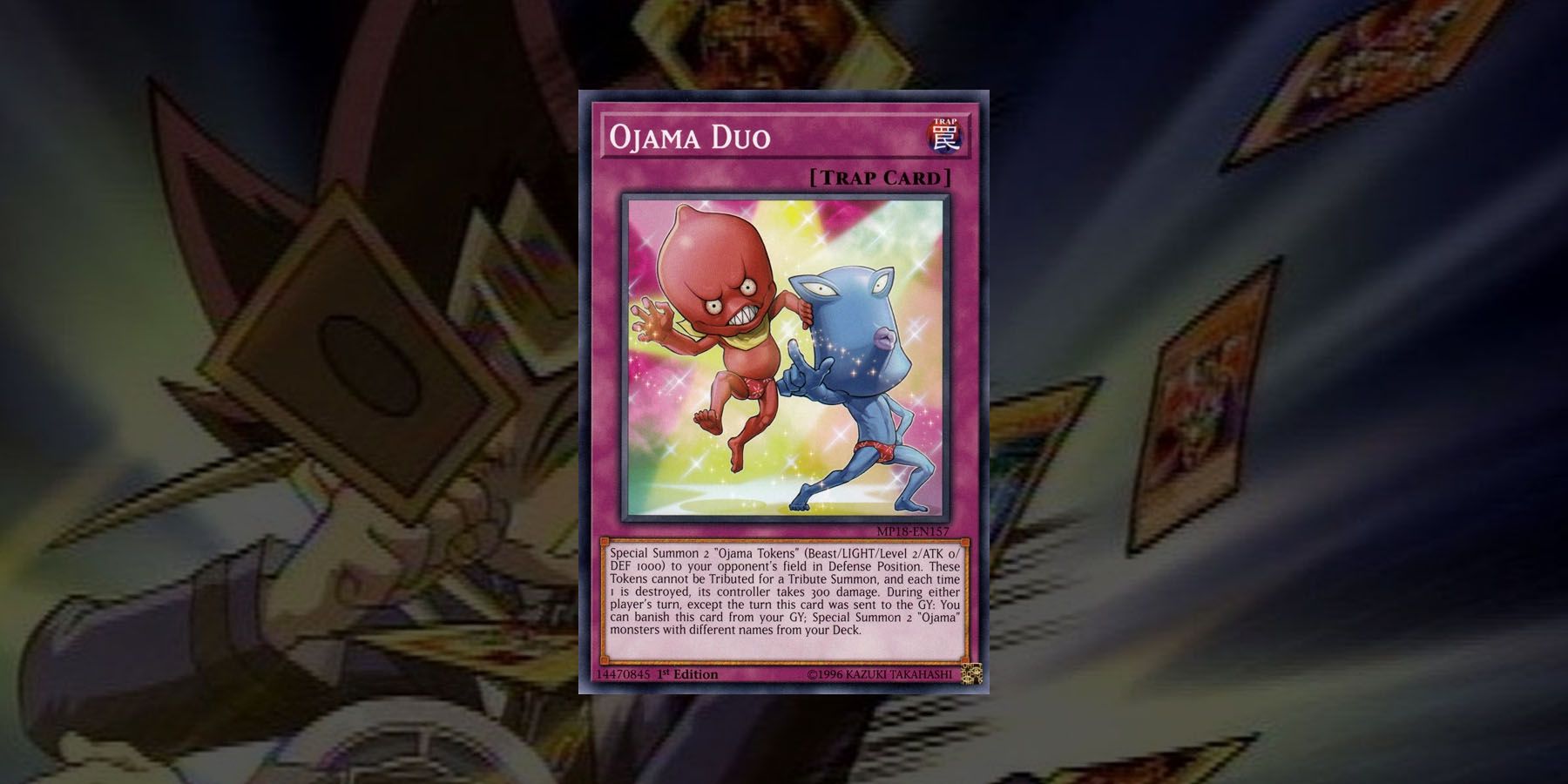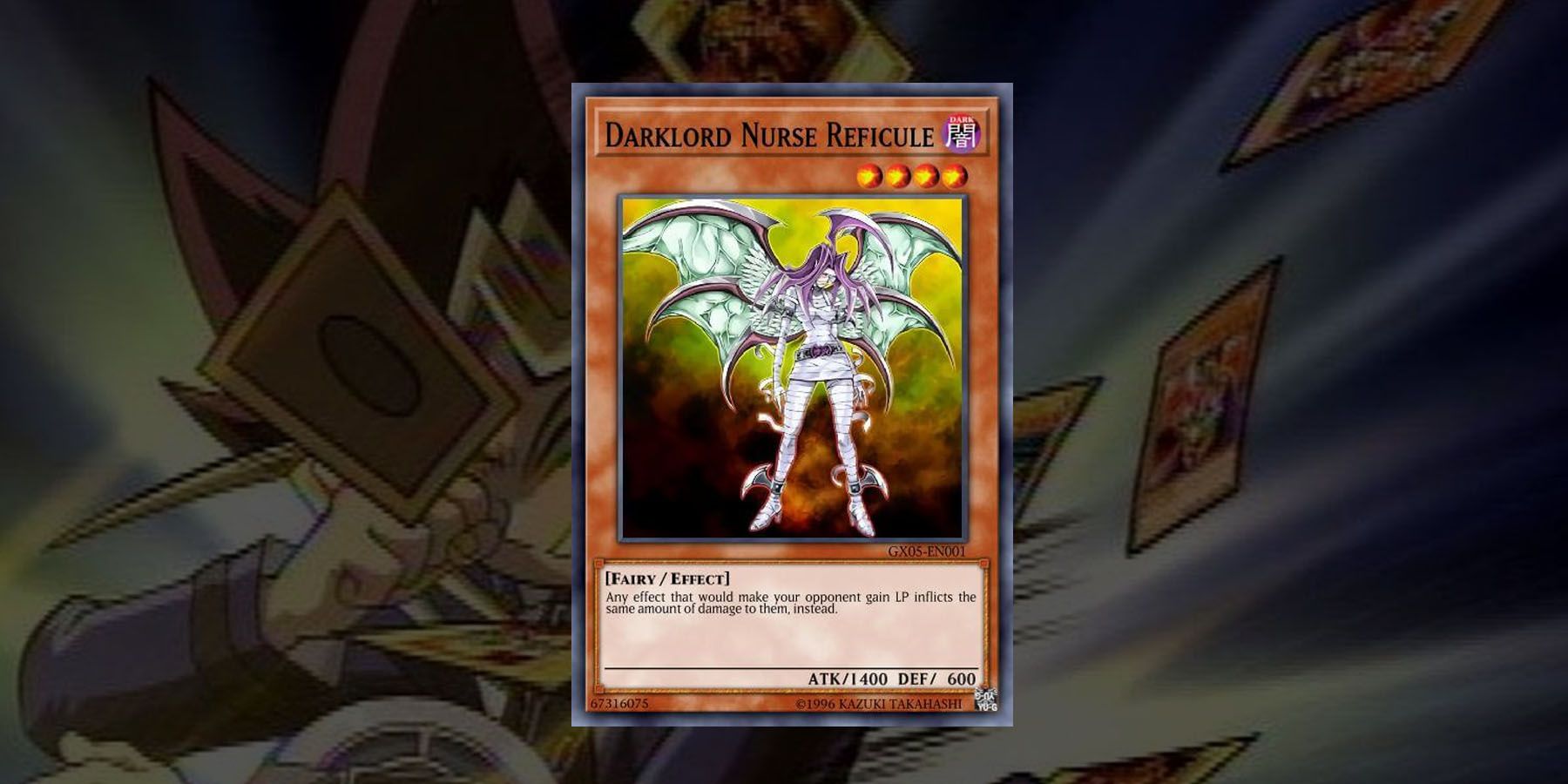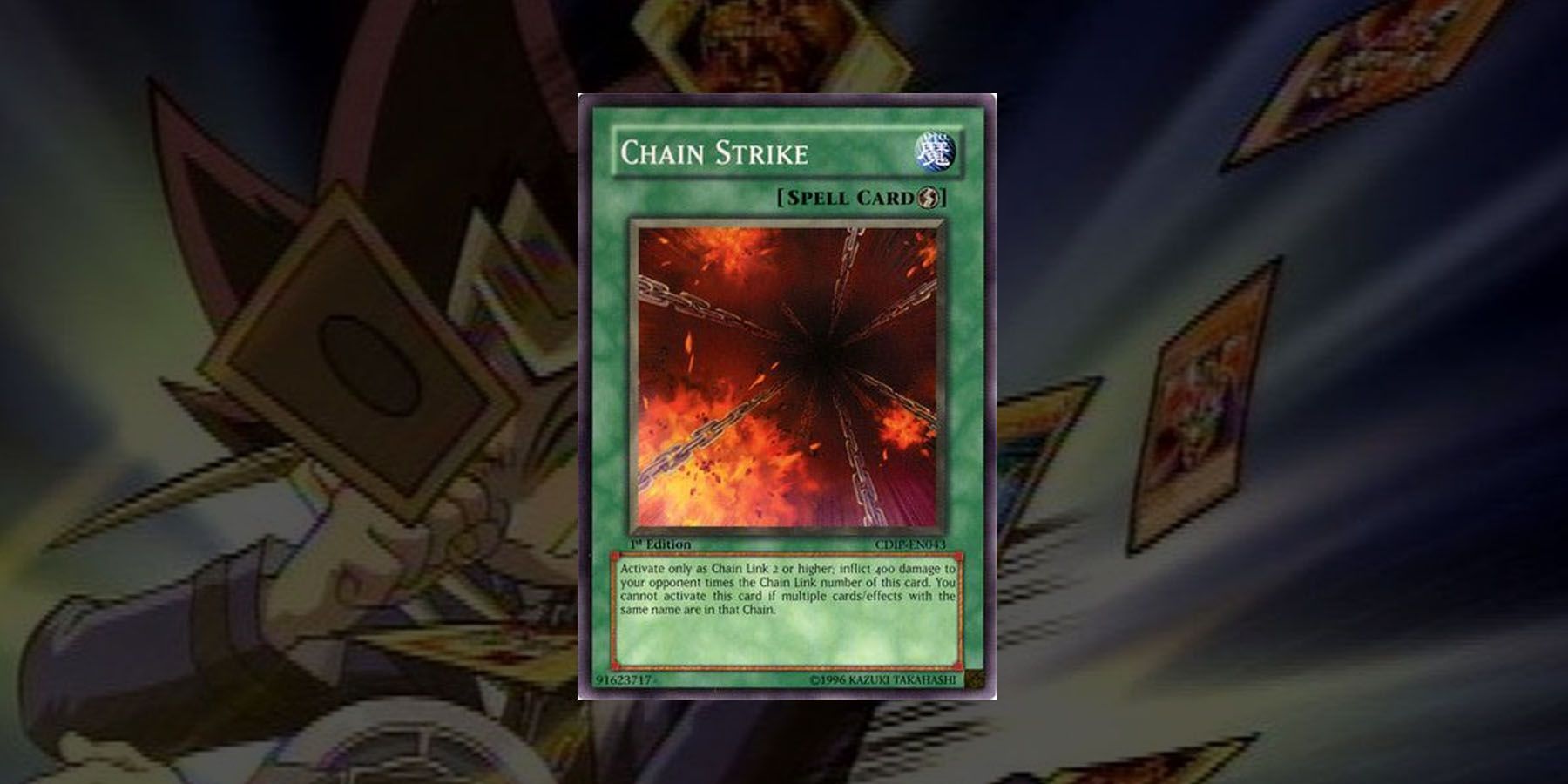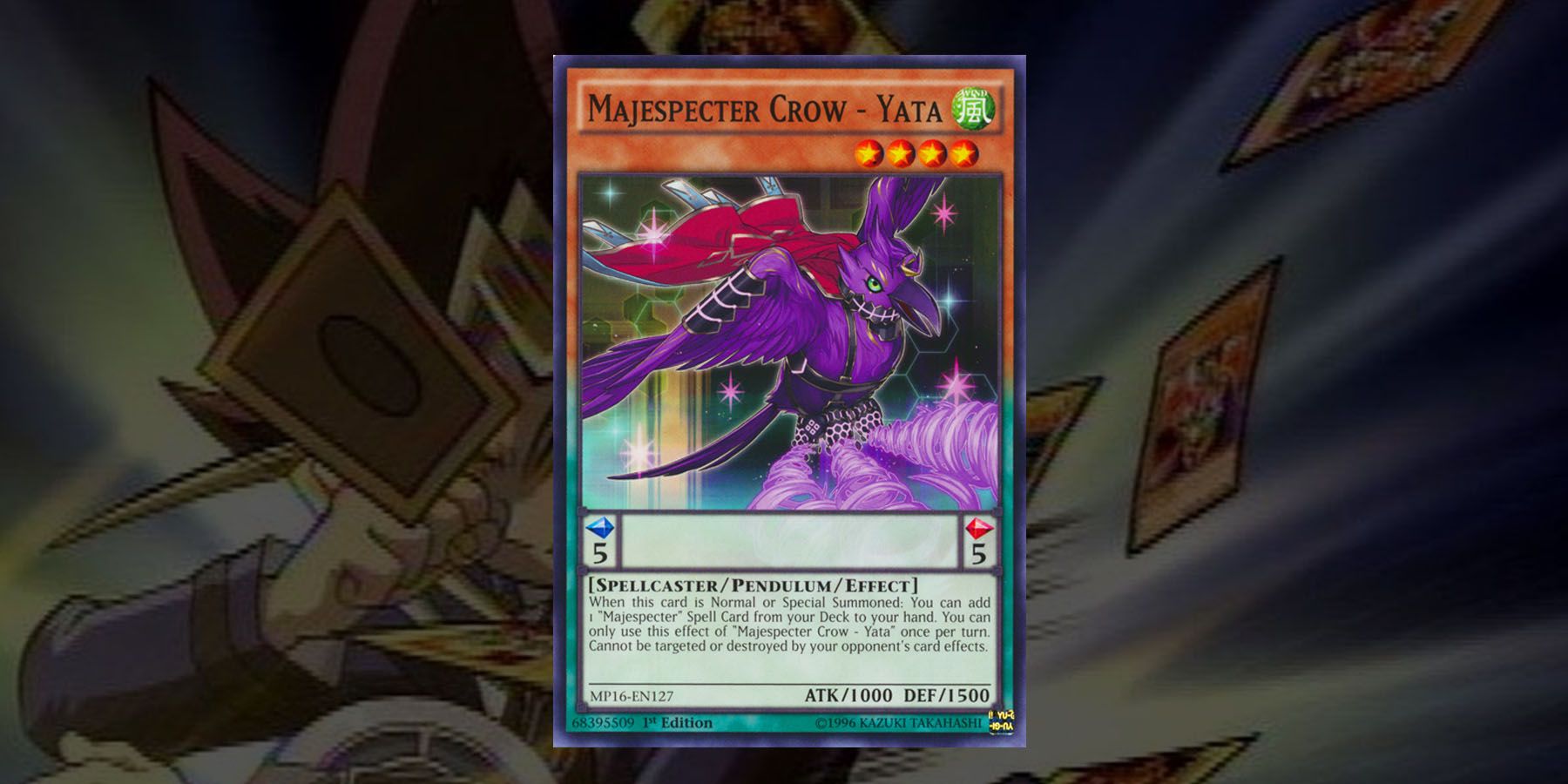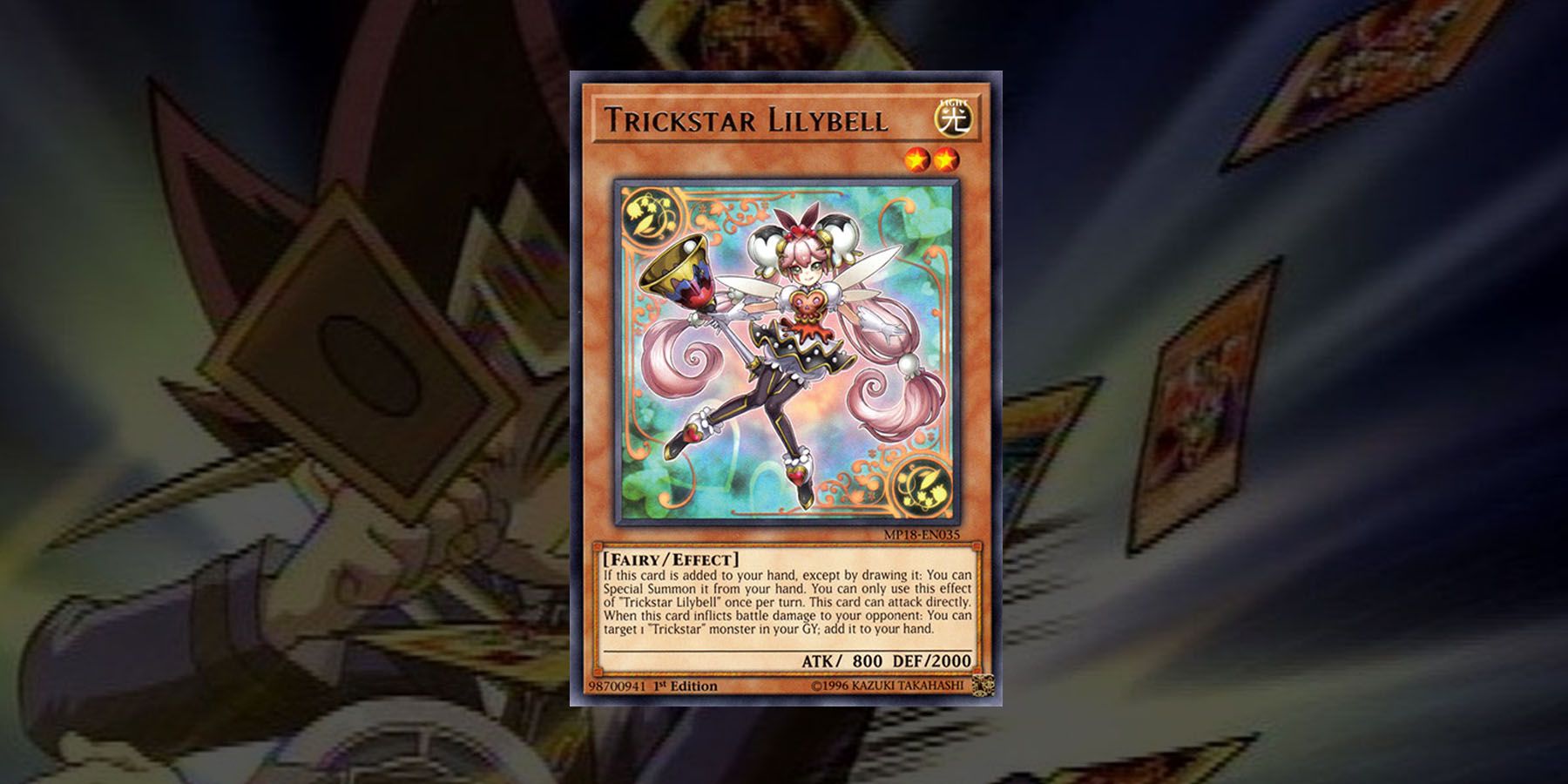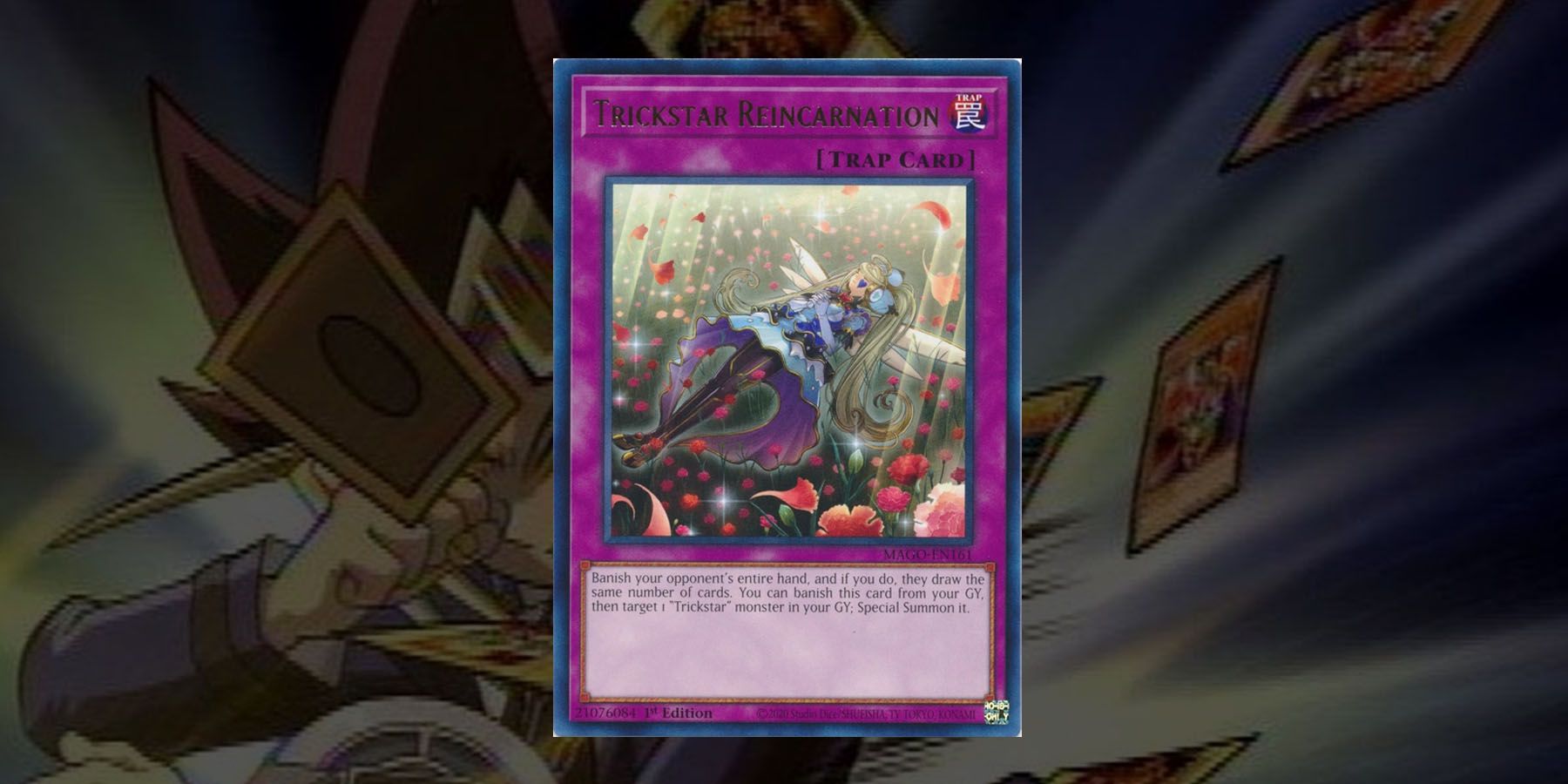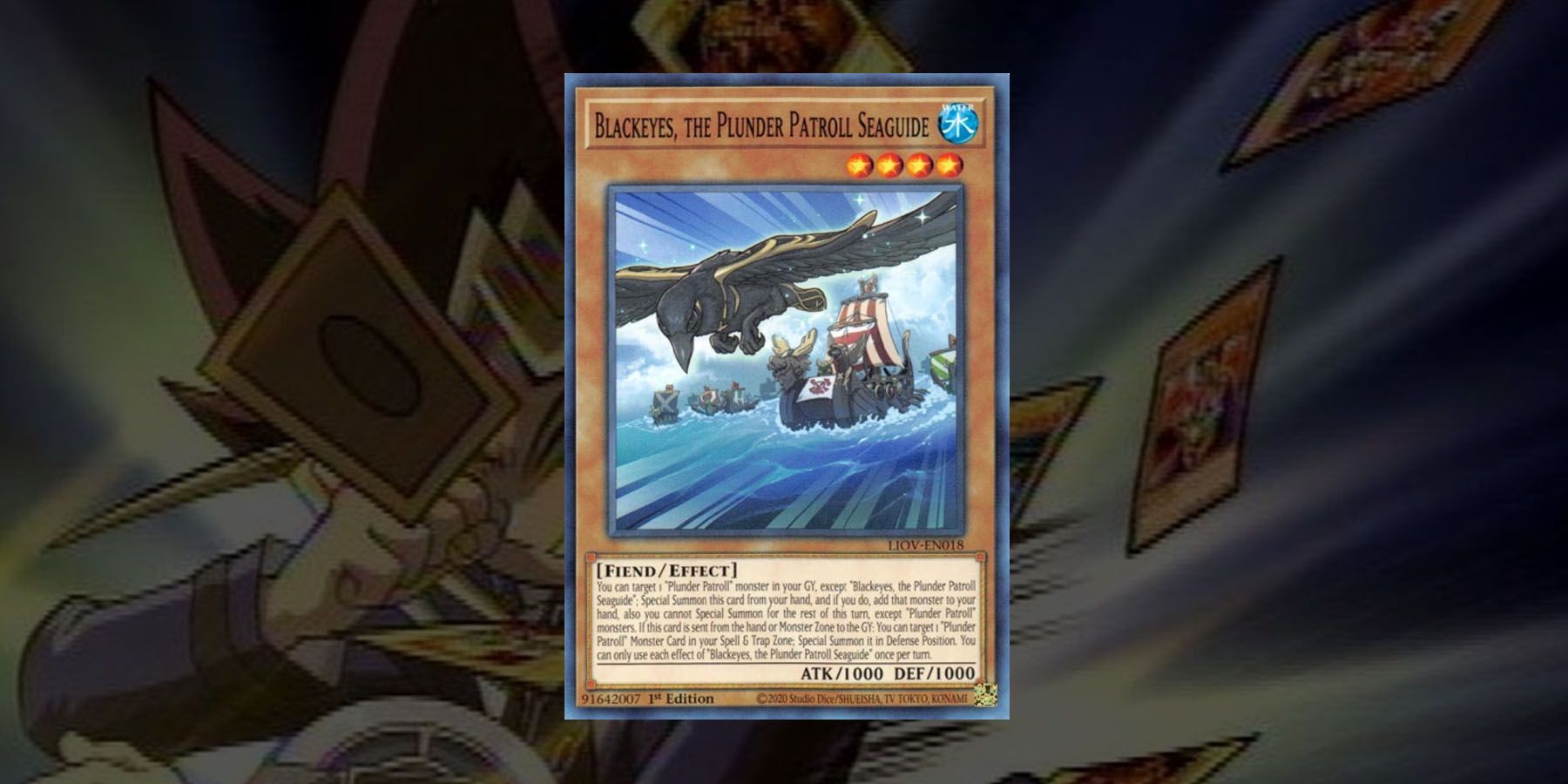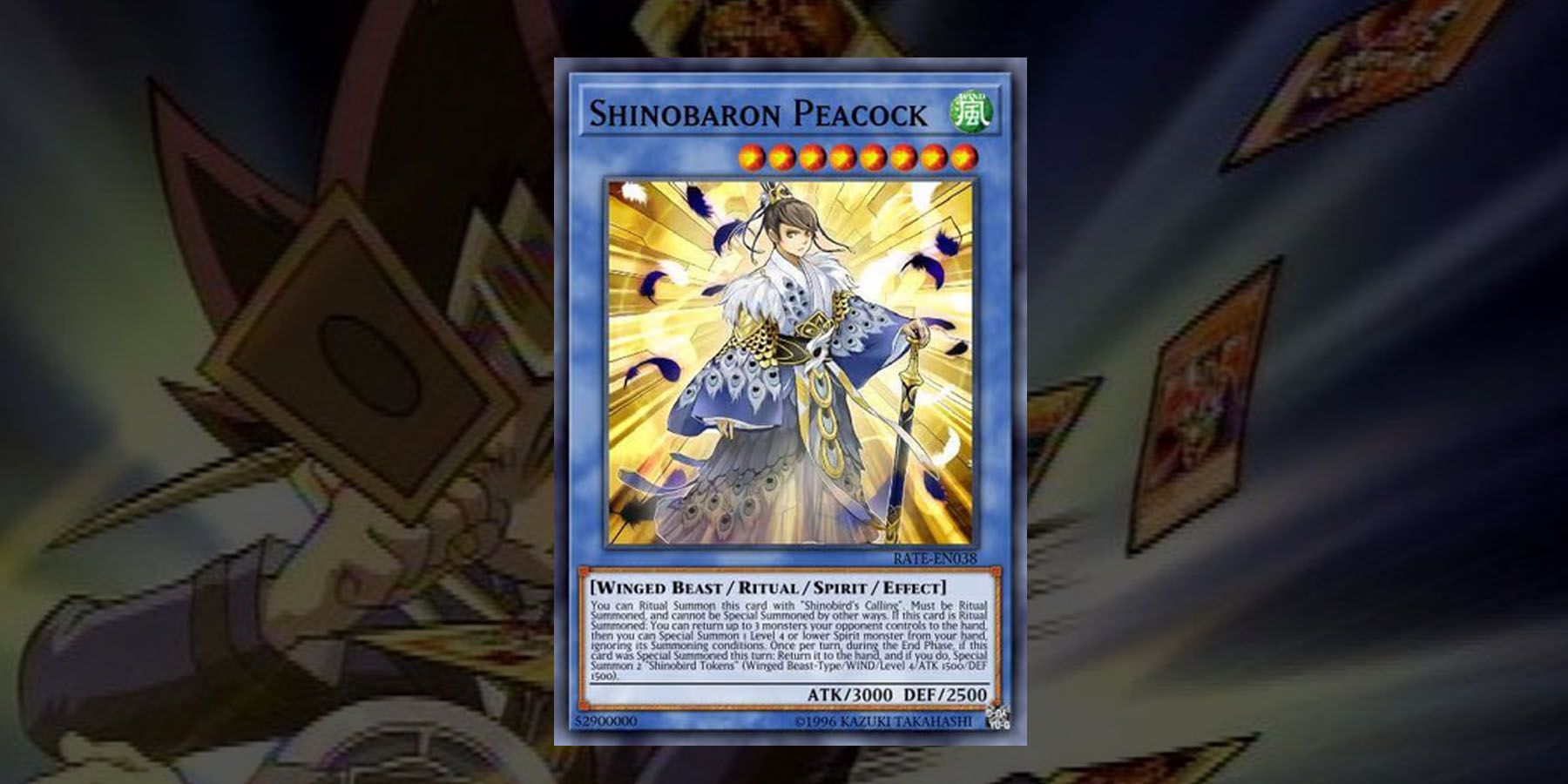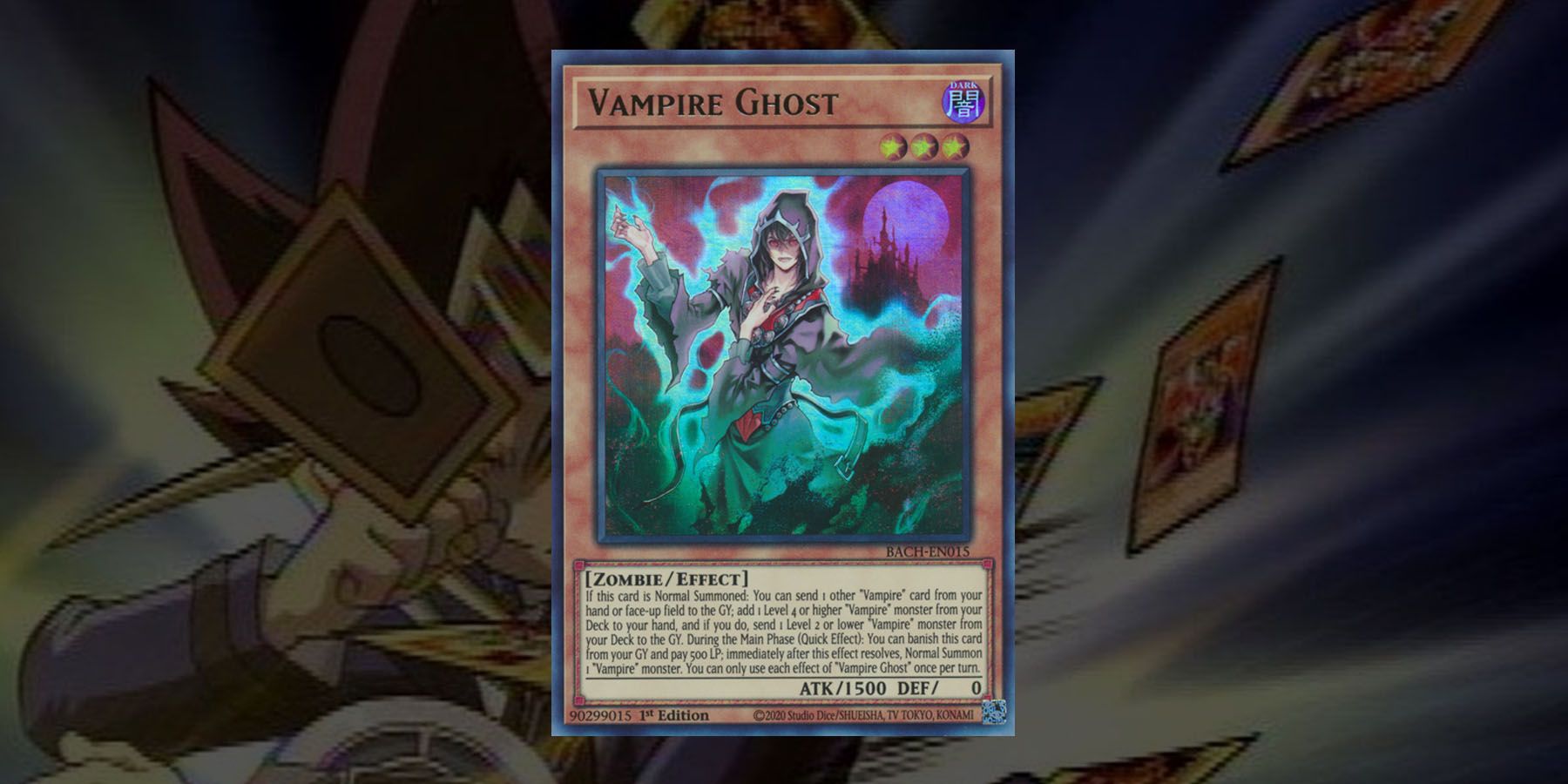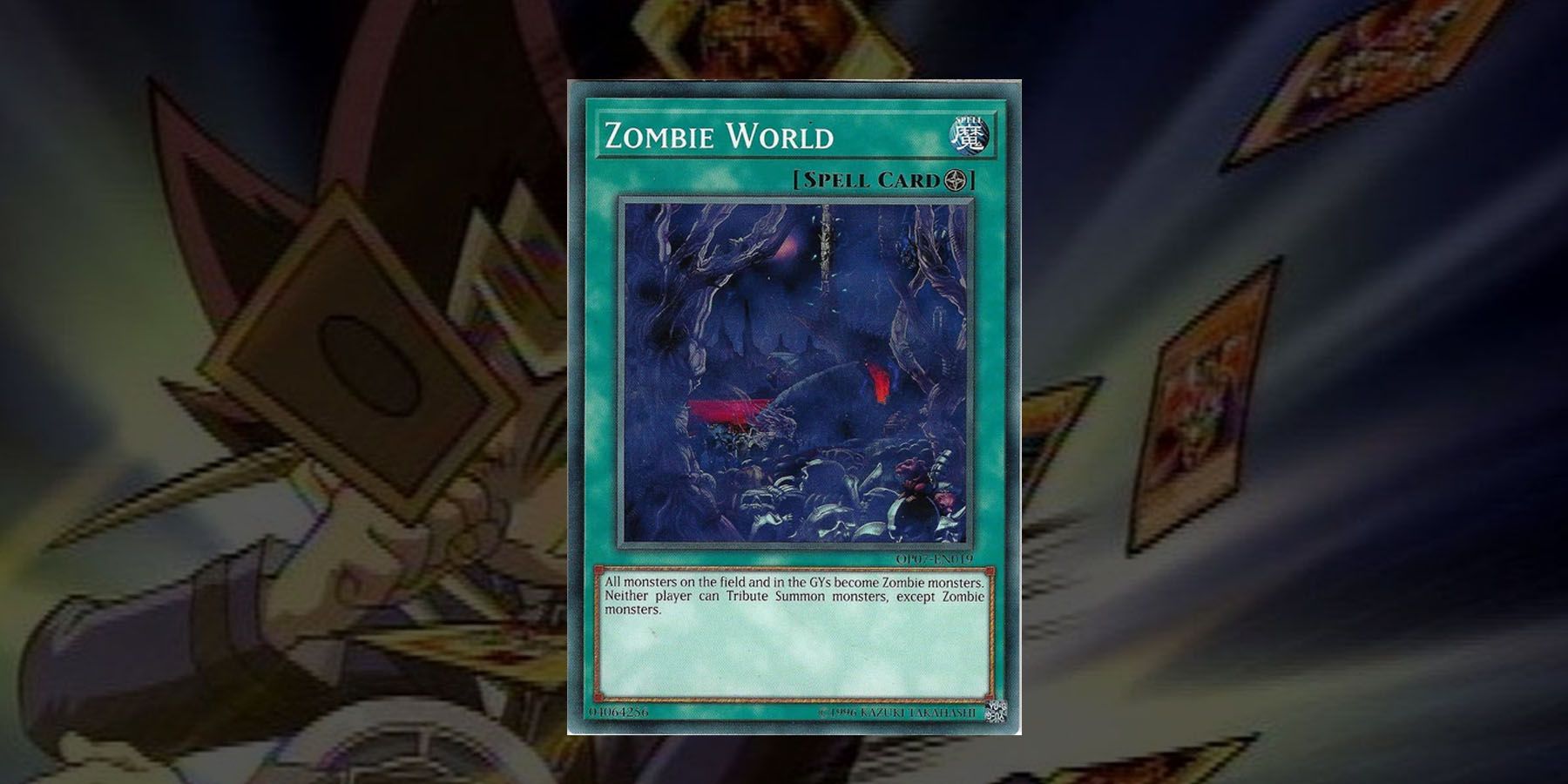Quick Links
Players of Yu-Gi-Oh! Master Duel know how meta-defining decks are often the only kinds of decks that win in most matches, especially since Yu-Gi-Oh! meta tends to be harsh to experimental decks due to hand-traps and other crazy Yu-Gi-Oh! shenanigans. However, thanks to the flexibility of Yu-Gi-Oh! Master Duel when it comes to card availability, fans have the entirety of classic Yu-Gi-Oh! and crazy builds with Extra Decks at their full disposal.
Interestingly enough, an effective build in Yu-Gi-Oh! Master Duel doesn’t necessarily have to be a meta deck. In fact, some players who just want to have a good time may want to consider using a wacky deck instead. Built to commit to a certain archetype or head-scratching mechanic, these crazy decks are sure to give players a good time, regardless if they win or lose along the way.
Ojama Stall
One of the best ways players can execute a crazy Yu-Gi-Oh! deck that can stun an enemy to submission would be through the Ojama Stall strategy. Banking on the wackiness of the Ojama trio, this Ojama Stall deck aims to lock an opponent into summoning a super specific type of monster, which chances are they don’t necessarily have.
To do this, players pull off a combo of either the Ojama Duo or the Ojama Trio combined with either Rivalry of the Warlords or Gozen Match. The point here is to use these strange Yu-Gi-Oh! cards to fill up the enemy’s Monster Zones and force them to exclusively summon LIGHT Monsters, immediately stalling them. Not only that, Cauldron of the Old Man will slowly build up counters to heal the player and deal damage to the opponent, punishing them throughout the stalling process.
Nurse Burn
When players use a rather weird deck in Yu-Gi-Oh! or practically any card game, there’s no guarantee of a surefire win. But when a crazy deck like Nurse Burn works, players are sure to have one hilarious time. The Nurse Burn deck relies heavily on Darklord Nurse Reficule. With her on the field, whenever enemies would be healed by any effect, they take as much damage in LP instead. In turn, the rest of the cards that accompany Darklord Nurse would either give enemies a chance to heal or allow players to secure their Nurse copies from the deck.
A great card to pair with the Nurse would be Upstart Goblin, which gives a player one draw in exchange for enemies gaining (or this time, losing) 1000 LP. A setback in this situation is, of course, enemies outright negating effects that would cause the LP loss in the first play. Either way, if players get to secure the Nurse in the field, it’s a hilarious situation that tips the scales to the opponent’s disadvantage even if they use strong decks such as Dragon-types.
Chain Burn
It’s become a popular meme within the Yu-Gi-Oh! series - and a rather popular card game mechanic - for cards to “chain” on top of each other as a result of different effects. Chain Strike takes advantage of this mechanic, with opponents getting 400 LP worth of damage depending on the number of Chain Links in this card, of which players need a minimum of two (2) Links to activate this Spell Card. The deck Chain Burn capitalizes on building links through various effect cards to maximize the damage of Chain Strike, making this a rather interesting deck to build.
With Chain Burn, players bank on triggering various effects at almost any point of a turn. For instance, a hand-trap like Mahaama the Fairy Dragon is Special Summoned from the hand during the damage step of an opponent’s turn. Likewise, the Trap Card Gravedigger’s Trap Hole is activated whenever the opponent tries to trigger a Monster’s effect from banishment, the GY, or the hand.
Majespecter Domination
Rarely do Yu-Gi-Oh! decks build upon an archetype where players can search for much-needed cards easily, but Majespecter Domination makes such an exception. The Majespecter Domination deck capitalizes on the Majespecter Archetype, centering over phantasmal magicians that have a special trait of being able to look for other Majespecter cards in the deck. With the right opening hand, players may be able to secure an ideal counter-strategy regardless of what the opponent pulls off.
Another special trait of the Majespecter Yu-Gi-Oh! Monster Card archetype is how most, if not all of them, are Pendulum Monsters - meaning players may be able to Special Summon to fill up the field very quickly and at the same time secure backup strategies with their effects.
Trickstar Punishment
Due to the popularity of negates in Yu-Gi-Oh! meta, one of the ideal strategies players should use when building decks is to prepare for them beforehand. While preparing another negate-counter would be ideal, a deck like Trickstar Punishment simply discourages enemies from pulling off their tricks in the first place. The Trickstar Punishment deck centers on Trickstar Candina, where this card inflicts 200 LP damage to opponents whenever they activate a Spell and/or Trap Card, practically punishing them for trying to do their tricks.
This Trickstar deck is also paired with the Spright archetype, where their fairy-themed shenanigans either search for other Spright Monsters for efficient summoning or outright discourage enemies from pulling off some monkey business with card effects.
Trickstar Burning
This variation of the Trickstar archetype relies heavily on other Trickstar variants to punish more of the enemy’s movements. In Trickstar Burning, Trickstar Candina’s anti-Spell/Trap burning is accompanied by Trickstar Lycoris, this time burning opponents for 200 LP whenever they add a card to their hand. Not only that, but Trickstar Lilybell can also attack the opponent directly.
It doesn’t help that the rest of Trickstar Burning’s toolkit is designed to trigger the effects of Trickstar Lycoris and Lilybell, practically punishing opponents more often.
For instance, in this Trickstar Burning deck, Trickstar Light Stage is a Field Spell that deals 200 LP damage to opponents whenever a Trickstar deals direct battle damage (in short, Lilybell) to them. Meanwhile, opponent-draw cards can secure massive LP damage numbers when activated, such as Trickstar Reincarnation and Card Destruction (hand wipe and draw the same number), and Dark Bribe (draw 1 card, 200 LP damage). This is on top of Dark Room of Nightmare which deals 300 LP damage to the opponent whenever a card effect deals damage to them.
Pillaging Plunder Patroll
With a card game like Yu-Gi-Oh! Master Duel practically forcing players to pay attention to their card combinations, flexibility is a surefire way to victory. And despite the wild theme of the Plunder Patroll archetype that centers around pirates, it’s also the teamwork of these pirates that gives players a lot of options to deal with situations. This is exactly what the Pillaging Plunder Patroll emphasizes, as its cards ensure players almost always have a way of summoning a Plunder Patroll card anywhere.
That’s because most Plunder Patroll effects in this deck either require sacrificing said card or Special Summoning a Plunder Patroll card from the GY. In fact, a lot of the “unique” Plunder Patroll effects come in the form of their supporting Spell or Trap Cards, wherein some give additional ATK (Emblem of the Plunder Patroll), boost ATK based on Plunder Patroll cards on the Spell/Trap Zone (Plunder Patroll Shipyarrrd), a free fusion (Plunder Patroll Shipshape Ships Shipping), and even a nifty draw-shuffle (Plunder Patroll Parrrty).
Hard-Hitting Shinobird
Sometimes, one of the best ways to secure a win in a Yu-Gi-Oh! duel is to go straightforward offense, especially when it comes to hard-hitting Ritual Monsters that aren’t as complicated compared to Synchro, Xyz, Pendulum, and Link Monsters. Such an example of a deck is the Hard-Hitting Shinobird, relying on Ritual Monsters or sheer firepower to secure the finish.
What makes the Hard-Hitting Shinobird rather interesting to use is its forward nature. There are not a lot of weird effects going on, as opponents know exactly what’s coming for them.
For instance, Impcantations Talismandra, Bookstone, Penciplume, and Candoll can facilitate generic Ritual Summoning by slowly grabbing RItual Monsters and Ritual Spells from the deck or the GY, with Special Summons allowing them to become tributes.
Meanwhile, ideal Ritual Summons such as Shinobaron Peacock or Shinobaronness Peacock facilitate hand and/or deck returns in addition to spamming tokens for added firepower. Lastly, even an ordinary 4-star Monster like the Amano-Iwato becomes a force to reckon with, as it can lock Summons from both sides to be exclusively Spirit Monsters.
Bloodlust Vampires
Due to the number of available cards across the years of Yu-Gi-Oh!, it makes sense for players to be able to build almost any kind of themed deck they want, with Bloodlust Vampires centering on the ability of the Vampire and Zombie archetypes to return from the GY. In Bloodlust Vampires, almost any of the Vampire cards included in the deck will be able to either summon other Vampire cards from the GY or summon destroyed enemy Monsters into the player's side of the field. This is on top of effects that may boost a Vampire's ATK or negate enemy effects.
Ideal strategies here include being able to combo Vampire Ghost with another Vampire card to have Beatrice, Lady of the Eternal into the field and facilitate more "Burning Abyss" summons, such as that of Doomking Balerdoch that can easily give free banishments. Likewise, Fusion Destiny can save players from bricks by Special Summoning Destiny HERO - Dasher, whereas Rivalry or Zombie World can block opponent Summons by transforming - and forcing summons of - everything into Zombies.
Zombie Heroes
It’s one thing for players to create a Yu-Gi-Oh! deck that has a healthy mix of protections against opponent negates and effects, and another thing entirely to be able to control the entire flow of combat while summoning powerful bosses into the mix. The latter is the entire playstyle of Zombie Heroes, with its endgame aiming to flood Zombies into the fray to overwhelm the opponent.
Ideally, players using Zombie Heroes should secure Zombie World early on to stop enemies from using very specific Extra Deck plays, popular with modern archetypes. Likewise, Super Polymerization can eliminate enemy monsters while Doomking Balerdoch can stop enemies from dishing out Monster effects. Meanwhile, being able to whip out Masked HERO Dark Law, Destiny HERO - Destroyer Phoenix Enforcer, and even Accesscode Talker can easily wipe the opponent without giving them a chance to recuperate.
Yu-Gi-Oh! Master Duel is currently available for the PC, Nintendo Switch, PS4, PS5, Xbox Series X/S, Xbox One, iOS, and Android.

